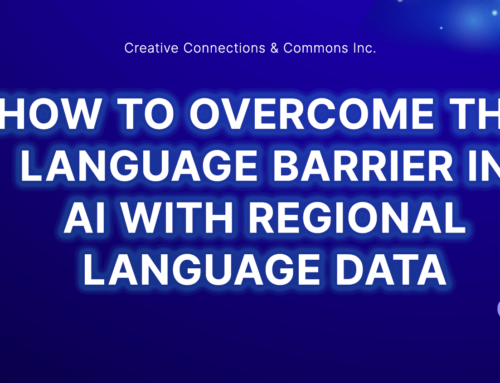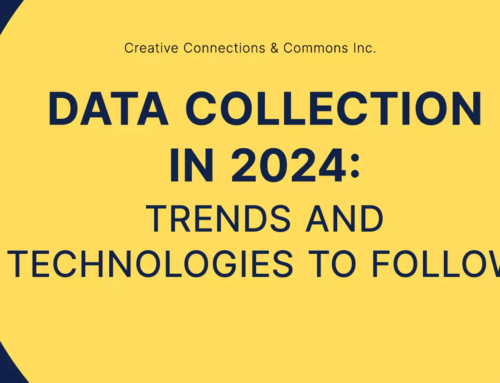Key Takeaways:
- The global chatbot market is expected to hit over US$27,200 million in 2030.
- AI chatbot training is about getting diverse and well-annotated data to reduce errors, promote personalization, and satisfy customers.
- The lack of high-quality datasets is a major hurdle to multilingual data collection.
- Proper preparation and human verification are key to data collection for multilingual chatbots and AI assistants.
Table of Contents:
- Why is Data Quality Key to Effective Chatbot Performance?
- The Key Challenges in Multilingual Data Collection
- What are the Best Practices for Multilingual AI Data Collection?
- CCC — Your Data Collection Partner
There are more than 300,000 chatbots on Facebook Messenger alone. Many people find it a more convenient option for answering simple queries than connecting with another person. Because of this, many businesses utilize chatbots for customer-related and even internal operations. With the bridging of cultural gaps through globalization and the Internet, the need for multilingual chatbots is rising.
Artificial intelligence (AI) has become a key tool in healthcare and customer service. AI is being used in medicine to identify tumors, make diagnoses, and streamline administrative tasks. One important task of AI is personalizing customer care. With AI assistants providing telemedicine, remote monitoring, and quick responses to patients, simple concerns can be immediately addressed. Businesses use chatbots and AI assistants for similar reasons. Chatbots reduce workload, provide round-the-clock and personalized customer service, and, not to mention, reduce costs.
The global chatbot market is expected to hit over US$27,200 million in 2030. With the growing demand for these tools comes the growing demand for data collection for multilingual chatbots. And without a doubt, obtaining quality data is key to effective chatbot performance.
Let CCC walk you through the best practices in training AI. Together, let us see how your company can create an effective and indispensable multilingual AI assistant in customer service!
Why is Data Quality Key to Effective Chatbot Performance?
One key aspect of AI chatbot training is the quality of the datasets. To create effective and well-performing chatbots, the data fed needs to be well-annotated. As AI relies on data, the data needs to be thoroughly checked to be free of biases and errors. Otherwise, the chatbot would perform poorly and cost both the business and the customer their time and money.
Let us look at the case of natural language processing (NLP) models, such as BERT and GPT. BERT and GPT are used in customer service chatbots for purposes like intent classification and question-and-answer situations. That being said, the chatbot must be able to communicate smoothly with the customer to address their needs. For that to happen, the model should be trained with proper grammar and diverse sentence structures. Moreover, it should be exposed to a wide vocabulary so that it can also respond like a human. If the business caters to international customers, then high-quality multilingual and multicultural datasets are needed. Multilingual chatbots that are trained with poor-quality datasets are at risk of translation errors and cultural misinterpretations. And those are certainly key things to avoid. This is usually an issue faced by low-resource languages, but we will look into that later.
Quality data also trains the chatbot to provide a personalized experience. And this is not only in terms of language. Customer satisfaction is achieved when the customer feels like their needs are understood and addressed. In the case of chatbots, this means that the chatbot understands the customer’s context and adapts to their preferences. This is possible if the chatbot bases this on historical data and data from similar exchanges with other customers.
Ultimately, AI chatbot training is about getting diverse and well-annotated data to reduce errors, promote personalization, and satisfy customers.
The Key Challenges in Multilingual Data Collection
But multilingual data collection is no easy feat! Let us discuss some of the challenges that you will encounter during this process.
The Availability of High-Quality Datasets in Multiple Languages
For the availability of high-quality datasets, there are two things to take into consideration. The first is the problem of low-resource languages. The second is the probability of getting low-quality data.
- Low-resource languages: Opposite to high-resource languages are low-resource languages. The latter simply refers to the languages that lack enough linguistic resources and support. This is in terms of available people, especially professionals, and technological resources that work with the language. For example, compared to English and Mandarin Chinese, there are limited resources and professionals working with Tagalog. And the number of resources and professionals gets even scarcer when we look at regional languages and dialects. For quality data, the companies must visit the area where the language is spoken. Moreover, this also concerns language diversity, references and expressions, sentence structure, and writing systems.
- Low-quality data: There can also be issues with the data itself. For example, when multilingual audio data is being collected, accents and background noise can affect data quality. Sometimes, the resource can be unreliable but is the one most available or convenient. It is essential that after being collected, the data goes through human processes. Here, data is annotated, cleaned, and transcribed, and unnecessary information is also reduced. However, human error is also one factor to consider. Even experienced professionals make mistakes. However, the risk goes up if the ones checking and sorting the data are not skilled or detail-oriented professionals.
Collecting high-quality data for low-resource languages is essential. This is also a big responsibility for the annotators of the data. This is because the multilingual chatbots created should have a sense of cultural relevance and sensitivity.
The Integration of Multilingual Data
Three things: translation, standardization, and format diversity. The integration of multilingual data into the model can be a challenge because of these three.
- Translation: Dealing with multiple languages also means dealing with different cultural references and nuances. Legal or medical terminologies also differ from region to region. With that, the issue is sometimes whether to translate it or not.
- Standardization: Consistency is key even in data collection. The alignment of words for translation and cross-lingual tasks demands consistency. This is difficult to achieve when the languages involved differ in terms of sentence structure. Additionally, there are cases where one word houses different meanings. In Tagalog, “malupit” means cruel, but it recently became slang for “awesome.” Having the same multi-meaning word can affect the results.
- Format diversity: Data does not only come in the form of text. It can come as audio, videos, and images. Using different formats can be a challenge to incorporate into a model. This is because they are subject to their own specific preprocessing techniques. Text, for example, may need tokenization, while images need resizing. This makes the process more time-consuming.
Data Privacy and Compliance
Data collection is subject to the data privacy laws of the regions involved. It is important to take note of and understand each region’s data privacy regulations. Some laws state that transferring data across borders is prohibited unless certain conditions are met. These conditions include encryption and other safeguards. On top of that, there is the process of getting the consent of participants. In this case, legal documents must be well-translated to avoid misunderstandings and legal complications. Ultimately, you need partners that ensure multilingual data security.
Note: The European Union has the General Data Protection Regulation (GDPR). In the United States, they have the California Consumer Privacy Act (CCPA). Read more about them here.
What are the Best Practices for Multilingual AI Data Collection?
Let us now head over to the best practices in training AI which involves collecting quality multilingual data.
- Set clear objectives for the data collection process: It is important to give the process direction. Proper planning should be the top priority. This will help you make decisive decisions that are efficient and cost-effective. Identifying key languages and ensuring that you have a diverse set of sources for your data is included here.
- Use native speakers: For AI assistants to be well-trained in the target language, native speakers should be employed. Select professionals who are native speakers even for data annotation. They are the best people to smoothen out inconsistencies, fix misspelled words, standardize formatting, and filter out irrelevant information.
- Leverage existing multilingual datasets: Check for readily available multilingual datasets. This can lift some of your burden and give you a good headstart. Remember: work smart as much as you work hard. And ensure that you regularly update the dataset afterward to avoid data drift.
- Read up on data privacy regulations: Be informed about the regulations of your target region. Try to look into them early on to save time and process documents as early as possible. Also, invest in tools and services that can guarantee multilingual data security.
- Use humans to validate the data: Machines have their limitations. Despite the probabilities of human error, it is always best to let humans validate the data. If anything, it is just a matter of selecting a trustworthy partner to do the job.
CCC — Your Data Collection and Multilingual Chatbots Partner
And that’s a wrap! Following these best practices will surely bring success to your data collection for multilingual chatbots. It is all about understanding the challenges, making the proper preparations, and leveraging available resources for efficiency and effectiveness.
Need someone you can trust? Well, CCC has got you covered! Our team’s multilingual expertise and extensive industry experience ensure quality and top-notch performance. We’re here to help you collect data for multilingual chatbots and more! After all, we share a common goal: making lives easier and quality services more accessible.
Leave the data collection to the professionals so you can focus on bigger tasks! Contact us today!









